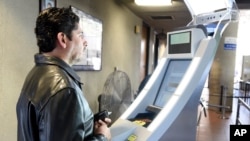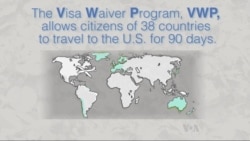Senior U.S. administration officials have shed more light on the K-1 visa application process, which has come under scrutiny following this month’s mass shooting in California.
In a background briefing Thursday, the officials said a review of the multi-agency program is under way and working groups have been established to address various aspects of the program.
President Barack Obama ordered the review of the K-1 fiancé(e) visa program after authorities learned that Tashfeen Malik, a Pakistani native who is believed to have pledged loyalty to Islamic State, came to the United States under a K-1 visa.
Malik and her American-born husband, Syed Rizwan Farook, died in a December 2 shootout with police, after they killed 14 people at a California holiday party.
“Just because a person gets a visa does not mean they will be able to come to the United States,” said a senior administration official.
A second official said the United States had revoked more than 122,000 visas since the September 11, 2001 terrorist attacks in the United States. The official said about 9,500 of those visas were revoked for “potential ties to terrorist activity.”
Senior administration officials said multiple security checks occur during the K-1 visa application process, which begins with a petition from U.S. citizens to permit their foreign national fiancés or fiancées to come to the United States so they can marry.
Officials said after the petition is filed with U.S. Citizenship and Immigration Services (USCIS), the department launches background checks through the Department of Homeland Security and other agencies to evaluate whether the petition should be granted.
If granted, the fiancé or fiancée can apply for a K-1 visa to come to the United States. The State Department oversees this portion of the application process, which includes an interview with the applicant and more background checks.
An official said the fingerprints of applicants are screened against Homeland Security and FBI databases. The official also said the applicants are screened against watchlist photos of known or suspected terrorists in FBI databases and other sources.
“Our security vetting of visa applicants is not a one-time look at these people,” said a senior administration official, who added that records of individuals are reviewed as new information becomes available.
Once in the United States, officials said the K-1 visa applicant usually has about 90 days to get married.
The applicants can then apply for an adjustment in their status in order to get a so-called green card, which allows permanent U.S. residency.
Officials said this application process triggers another inter-agency background check.










